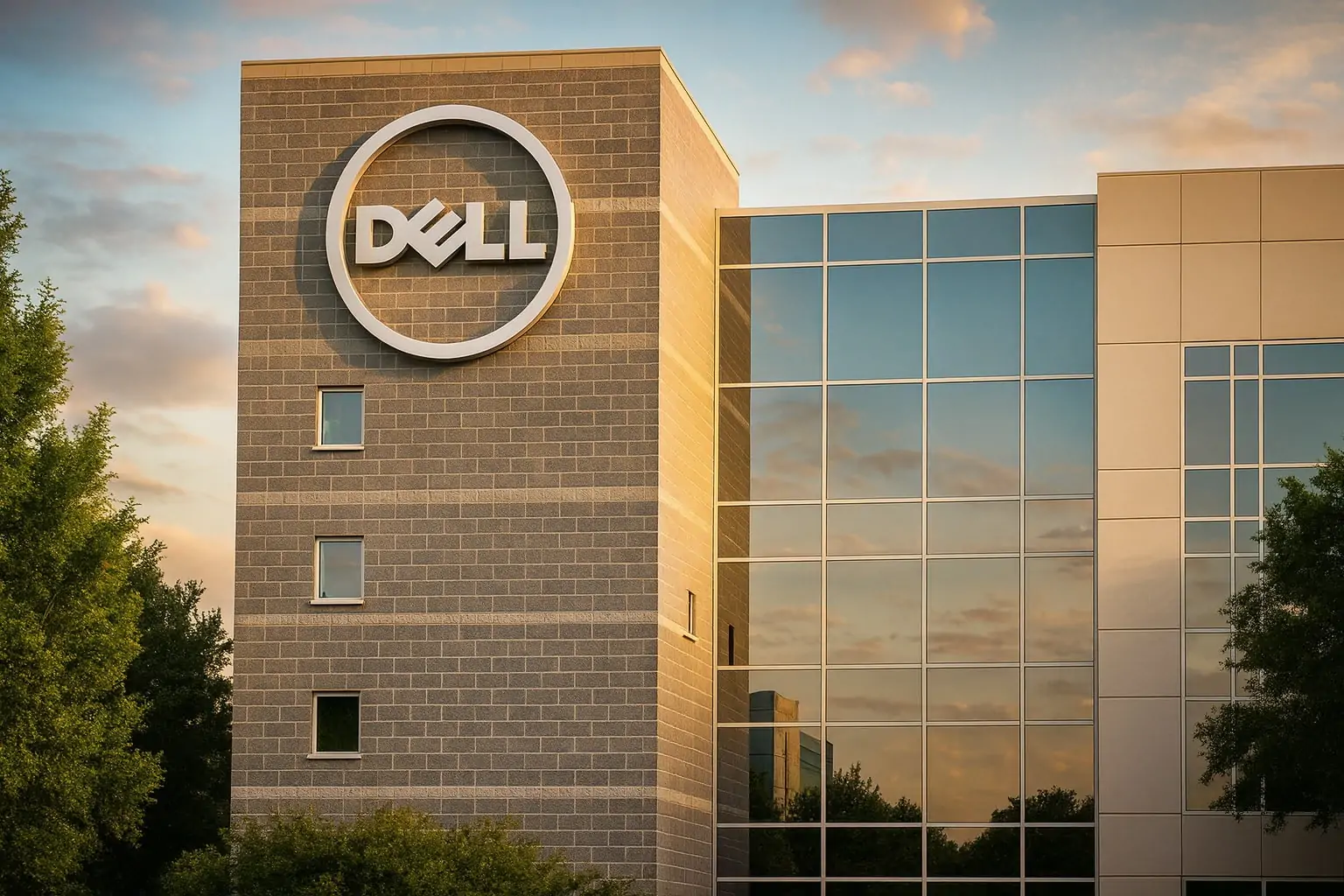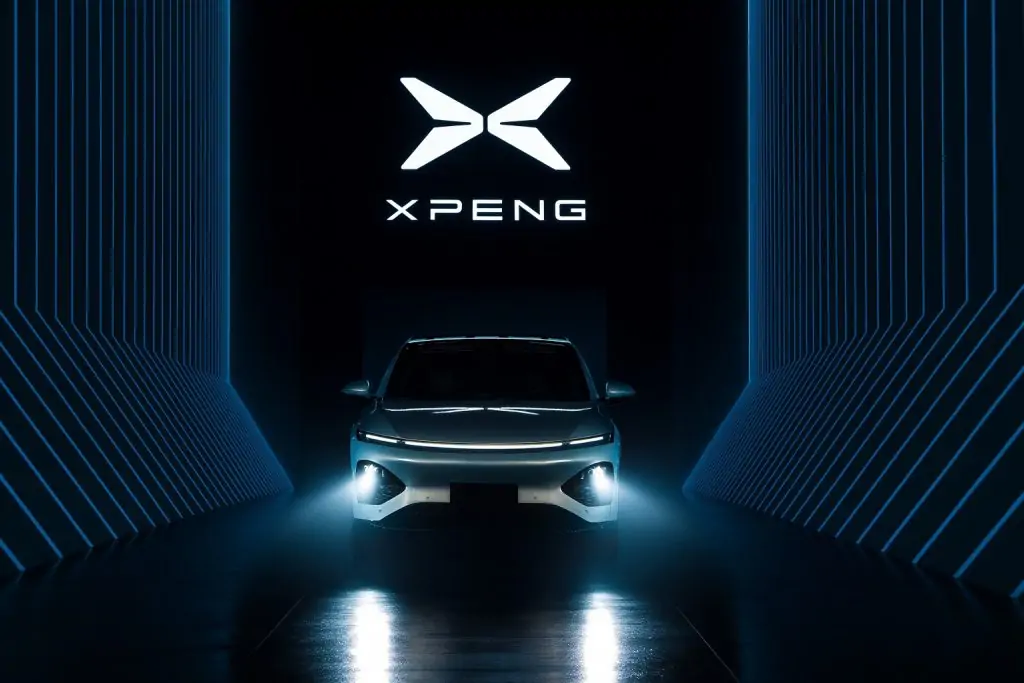Dell Technologies Inc. (NYSE: DELL) saw volatile trading on November 17, 2025, as a rare Morgan Stanley double downgrade clashed with a fresh JPMorgan price-target hike and a new AI cloud infrastructure deal with HIVE Digital. Here’s what investors need to know today.
- Stock volatility: Dell shares swung after a double downgrade from Morgan Stanley to Underweight with a cut price target of $110 (from $144), citing rising memory costs and pressure on 2026 margins. [1]
- Opposing view:JPMorgan raised its Dell price target to $170 and kept an Overweight rating, adding the stock to its “Positive Catalyst Watch” list, pointing to strong computing demand and revenue growth potential. [2]
- Real AI demand: A new deal with HIVE Digital Technologies’ BUZZ HPC unit will deploy a 63‑node liquid‑cooled Dell PowerEdge XE9680L GPU cluster inside Bell’s AI Fabric data center, targeting >6,000 new GPUs and $120M in extra ARR by 2026. [3]
- Peripherals strength: A fresh laptop accessories market study names Dell among the top three global brands, especially strong in docking systems and eco-labeled products. [4]
- Institutional flows:Raiffeisen Bank International AG cut its Dell stake by 13.4% in Q2, but institutions still hold over 76% of the stock. [5]
DELL Stock Today: Volatility After a Rare Double Downgrade
On Monday, November 17, Dell Technologies (NYSE: DELL) spent much of the session in the spotlight as traders digested a highly unusual double downgrade from Morgan Stanley alongside a fresh bullish note from JPMorgan.
- In U.S. pre‑market trading, Dell shares were down more than 5% after Morgan Stanley released its new report. [6]
- In European trading, the Frankfurt‑listed Dell stock changed hands around €107–111, down roughly 3–7% on the day depending on the venue. [7]
- As of around mid‑session U.S. time, Dell’s NYSE price was about $133.76, only modestly below the prior close, after an earlier sell‑off. [8]
Over the last week, Dell has slid roughly 9–10%, and it is down about 12% over the past month, though only slightly negative over the past year. [9] The 52‑week range remains wide, with a low near $66 and a high around $168. [10]
Put simply: today’s move is about expectations, not about new earnings numbers. The battle is over what Dell’s AI‑driven future is really worth given rising component costs and a more mixed PC/hardware environment.
Why Morgan Stanley Turned Bearish on Dell for 2026
Morgan Stanley’s call is the most dramatic new development for DELL today.
According to coverage summarizing the bank’s note, analyst Erik Woodring:
- Downgraded Dell from Overweight to Underweight, skipping the intermediate “Equal Weight” step – hence the term “double downgrade.” [11]
- Cut the 12‑month price target to $110 from $144, implying meaningful downside from recent trading levels. [12]
The “memory super‑cycle” concern
The core of Morgan Stanley’s thesis is that rising memory prices and a shifting product mix toward AI servers could compress hardware margins in 2026:
- The bank flags a “memory super‑cycle” – a sharp upswing in DRAM and NAND pricing – as a risk for OEMs like Dell. [13]
- Woodring’s team expects higher component costs to collide with “tepid” demand for traditional, non‑AI hardware, making it hard for Dell to fully pass those costs on to customers. [14]
- Morgan Stanley now models around a 60‑basis‑point decline in global OEM margins in 2026, whereas the Street had been penciling in slight expansion. [15]
In other words, the bank isn’t questioning Dell’s relevance in AI – it’s questioning whether the economics of that AI hardware boom will be as profitable as investors previously assumed, once you factor in more expensive memory and weaker demand elsewhere in the portfolio.
From an investor‑sentiment perspective, a double downgrade from a top‑tier firm is a strong “risk‑off” signal. It tells big funds: “If you’re overweight this name, think about cutting back.”
JPMorgan Still Sees Upside: Dell Added to “Positive Catalyst Watch”
On the same morning, JPMorgan took almost the opposite stance.
In a new note, JPMorgan:
- Raised its Dell Technologies price target to $170 and
- Reiterated an Overweight rating, adding the stock to its “Positive Catalyst Watch” list ahead of upcoming catalysts. [16]
JPMorgan’s argument looks like this:
- Demand for computing and AI infrastructure remains strong, especially in servers and data‑center gear. [17]
- Revenue growth from AI and high‑end compute can help offset concerns about a lower‑margin mix, keeping the overall earnings trajectory healthier than the bears expect. [18]
- Dell remains a top‑three player in PCs, servers and external storage, with a large installed base and channel reach that give it leverage as AI and hybrid cloud deployments ramp. [19]
JPMorgan’s target effectively says: despite near‑term volatility, Dell still has room to rerate higher if AI‑related demand continues to surprise to the upside and if margins prove more resilient than the worst‑case scenarios.
New AI Cloud Deal Shows Dell’s Infrastructure Clout
While analysts debate valuations, Dell quietly landed another high‑profile AI infrastructure win.
Early this morning, HIVE Digital Technologies Ltd. announced that its subsidiary BUZZ High Performance Computing has signed an agreement with Dell Technologies to power its next wave of AI cloud build‑out: [20]
- BUZZ will deploy a 63‑node, liquid‑cooled Dell PowerEdge XE9680L cluster,
- housing 504 of the latest‑generation GPUs,
- delivered as fully integrated Dell IR5000 rack systems into the Bell AI Fabric data center in Canada.
- BUZZ plans to scale to more than 6,000 latest‑gen GPUs across facilities in Canada and Sweden by the end of 2026, targeting over $120 million in additional annual recurring revenue (ARR) at an estimated 80% operating margin (after power and data‑center costs) for its AI cloud business.
Combined with its existing GPU fleet, BUZZ is aiming for 11,000+ GPUs operational by 2026, positioning the platform as one of the more significant “sovereign AI” and high‑performance computing (HPC) infrastructures in Canada. [21]
For Dell, this deal reinforces a few important points:
- Dell is not just selling commodity servers – it’s delivering high‑density, liquid‑cooled AI systems into cutting‑edge data centers.
- These systems are part of multi‑year scaling plans, not one‑off shipments, which can support more durable infrastructure revenue if execution goes to plan.
- It aligns with Dell’s previously stated view that “AI factories” and data‑center build‑outs will be a major growth driver over the coming years. [22]
Even though this particular press release is technically about HIVE, it is Dell hardware at the heart of the story, underscoring why many analysts still put Dell in the “AI beneficiary” bucket.
Peripherals & PC Ecosystem: Dell Among Top Laptop Accessories Brands
Away from servers and Wall Street, Dell’s peripheral and accessory business also got a shout‑out today.
A new global and European laptop accessories market study from Future Market Insights forecasts the market to reach about $81.6 billion by 2035, growing at roughly 7.1% annually from 2025 to 2035. [23]
Within that market:
- The top three brands – Logitech, Dell Technologies, and Anker – together hold around 30% share.
- Dell is highlighted as dominant in advanced docking systems, a key piece of the hybrid‑work hardware stack.
- The report notes that brands like Dell now offer multiple CarbonNeutral® certified products, and are leaning into sustainability, ergonomic design and multi‑function accessories. [24]
For investors trying to value Dell’s Client Solutions Group (CSG) – the PC and peripherals side – this matters. Accessories and docks can:
- Carry higher margins than bare‑bones PCs,
- Tie customers deeper into Dell’s ecosystem of displays, docks and endpoints, and
- Provide recurring replacement and expansion demand as hybrid work and multi‑monitor setups become standard.
It’s a useful counterbalance to the narrative that “PCs are dead”; instead, the market is evolving, and Dell is one of the core brands shaping that evolution.
Institutional Investors Trim Positions but Stay Heavily Exposed
On the ownership side, MarketBeat reported today that Raiffeisen Bank International AG reduced its Dell stake by 13.4% in Q2, selling 23,921 shares and bringing its holdings down to 155,163 shares, worth about $18.7 million at the time of filing. [25]
The same filing‑based summary highlights that:
- A number of other institutions added to or trimmed Dell positions over recent quarters.
- In aggregate, hedge funds and other institutional investors own roughly 76% of Dell’s stock, indicating that big money remains deeply involved in the name. [26]
This kind of flow often reflects portfolio rebalancing rather than a binary “love it / hate it” signal, but in the context of today’s double downgrade, it does show that some institutions have been de‑risking a bit into Dell’s AI‑driven run‑up.
How Today Fits Into Dell’s Bigger AI Story
To understand today’s whipsaw, it helps to zoom out.
Over the last year, Dell has intentionally repositioned itself as a major AI infrastructure player:
- In October 2025, Dell used its Securities Analyst Meeting to raise its growth targets for the next four years, pointing to robust demand for AI servers and data‑center gear. [27]
- Dell has reported record quarterly revenue in recent quarters, explicitly citing AI server demand as a key driver. [28]
- CEO Michael Dell has repeatedly argued that talk of an AI slowdown is overdone and that AI workloads will continue to drive infrastructure spending for years. [29]
Financially, Dell still looks like a scaled, profitable hardware leader:
- Fiscal 2025 revenue: about $95.6 billion,
- Net income: roughly $4.6 billion, [30]
- P/E ratio: near 19–20x, with a market cap in the high‑$80 to low‑$90 billion range. [31]
Today’s news doesn’t overturn that foundation. Instead, it sharpens the debate:
- Bulls (like JPMorgan) argue that Dell’s scale, AI portfolio, and strong customer base will allow it to grow earnings even if some mix‑shift pressure persists. [32]
- Bears (like Morgan Stanley) worry that rising memory costs and soft non‑AI demand will squeeze margins in 2026, meaning current multiples may be too generous. [33]
What to Watch Next for Dell Technologies (DELL)
For investors and watchers of Dell Technologies, key checkpoints after today include:
- Next earnings report & guidance
- How does management talk about memory costs, AI server margins, and 2026 expectations?
- Do they reaffirm or tweak their long‑term growth framework set out at the analyst day? [34]
- AI infrastructure deal cadence
- Follow‑on announcements similar to today’s HIVE/BUZZ partnership, especially with telcos, cloud providers or sovereign AI projects, would reinforce Dell’s place in the AI data‑center build‑out. [35]
- PC and accessories trends
- Updates on commercial PC demand and docking/monitor/accessories growth, particularly in enterprise and hybrid‑work rollouts, will influence margins in the Client Solutions Group. [36]
- Analyst consensus shifts
- Trading dashboards already show an analyst target range from $110 to about $200, with Morgan Stanley now anchoring the low end. [37]
- Watch whether other banks follow Morgan Stanley, side with JPMorgan, or stay on the sidelines.
As always, investors should weigh both sides of the argument and consider their own risk tolerance, time horizon and diversification needs. This article is for informational purposes only and does not constitute investment advice.
FAQs: Dell Technologies Stock on 17 November 2025
Why is Dell Technologies (DELL) stock moving today?
Because of conflicting analyst actions and a new AI infrastructure announcement: Morgan Stanley issued a rare double downgrade to Underweight with a $110 target, while JPMorgan raised its target to $170 and kept an Overweight rating, and HIVE Digital announced a new AI cloud deployment built on Dell servers. [38]
What exactly did Morgan Stanley say about Dell?
Morgan Stanley argues that a “memory super‑cycle” in DRAM/NAND plus weak traditional hardware demand will likely compress Dell’s margins in 2026, leading to earnings downgrades and multiple compression, hence the new Underweight rating and $110 target. [39]
And what is JPMorgan’s bull case?
JPMorgan believes AI and broader computing demand can drive enough revenue growth to more than offset mix‑related margin concerns. The bank sees Dell as a key AI and infrastructure beneficiary and now targets $170 per share while keeping an Overweight rating and listing Dell on its “Positive Catalyst Watch.” [40]
What is the new AI cloud deal about?
HIVE Digital’s BUZZ HPC unit is deploying a 63‑node, liquid‑cooled Dell PowerEdge XE9680L cluster with 504 GPUs into the Bell AI Fabric data center, with plans to scale beyond 6,000 new GPUs and an additional $120 million ARR by 2026 across multiple sites in Canada and Sweden. Dell is the hardware backbone of that expansion. [41]
Is Dell still considered an “AI stock”?
Yes. Despite today’s downgrade, Dell remains widely viewed as an AI infrastructure player, thanks to its AI‑optimized servers, data‑center hardware, and growing roster of AI cloud customers, and its own raised long‑term growth targets tied to AI demand. The disagreement today is less about whether Dell is in AI, and more about how profitable that AI boom will be after higher component costs. [42]
References
1. thetradable.com, 2. www.gurufocus.com, 3. www.stocktitan.net, 4. www.einpresswire.com, 5. www.marketbeat.com, 6. stocktwits.com, 7. www.wallstreet-online.de, 8. www.tradingview.com, 9. www.tradingview.com, 10. www.marketbeat.com, 11. thetradable.com, 12. thetradable.com, 13. www.aktiencheck.de, 14. www.aktiencheck.de, 15. www.asktraders.com, 16. www.gurufocus.com, 17. www.gurufocus.com, 18. www.gurufocus.com, 19. www.gurufocus.com, 20. www.stocktitan.net, 21. www.stocktitan.net, 22. www.reuters.com, 23. www.einpresswire.com, 24. www.einpresswire.com, 25. www.marketbeat.com, 26. www.marketbeat.com, 27. www.reuters.com, 28. www.hotcandlestick.com, 29. finance.yahoo.com, 30. www.reuters.com, 31. www.gurufocus.com, 32. www.gurufocus.com, 33. www.aktiencheck.de, 34. www.reuters.com, 35. www.stocktitan.net, 36. www.einpresswire.com, 37. www.tradingview.com, 38. thetradable.com, 39. www.aktiencheck.de, 40. www.gurufocus.com, 41. www.stocktitan.net, 42. www.reuters.com










